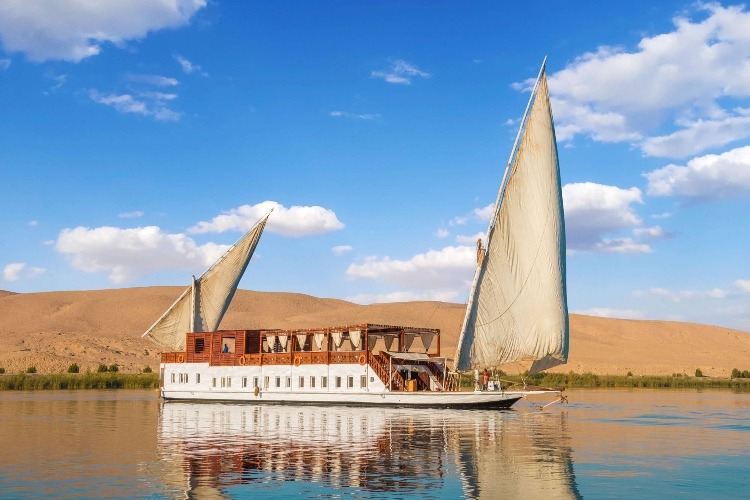Aswan is one of Egypt’s most attractive cities, with a stunning Nile Valley landscape, important archaeological monuments, and a serene atmosphere. Its weather is pleasant all year, making it an ideal winter getaway. Additionally, this city offers spectacular views and attractions for felucca sailing on the Nile. For thousands of years, Aswan was like a large necropolis for the pharaohs and their valuables, earning it the nickname “Land of Gold.” For this reason, we’ve compiled a list of 8 activities you can do in Aswan to rejuvenate your spirit and celebrate amazing moments!
Explore Elephantine Island
Elephantine Island is Aswan’s main tourist attraction, with palm tree plantations and sloping communities of colorful mud-brick buildings. The Ruins of Abu, Aswan’s most ancient village, which contains the Old Kingdom Temple of Khnum and the Temple of Satet, are located near its southern end. Many objects in the Aswan Museum, which were opened to the public in 1912, depict the history of the Nubian region. A different area of the museum, which features items found on Elephantine Island itself, such as pottery, mummies, weaponry, and utensils, was opened in 1990. The German Archaeological Institute has uncovered many of these items and relics, including a mummified ram of Khnum and a rare calendar, popularly known as the Elephantine Calendar of Things from Thutmose III’s reign. If you’re interested in learning more history about this area, the Aswan Museum and the island itself can provide you with all the information.
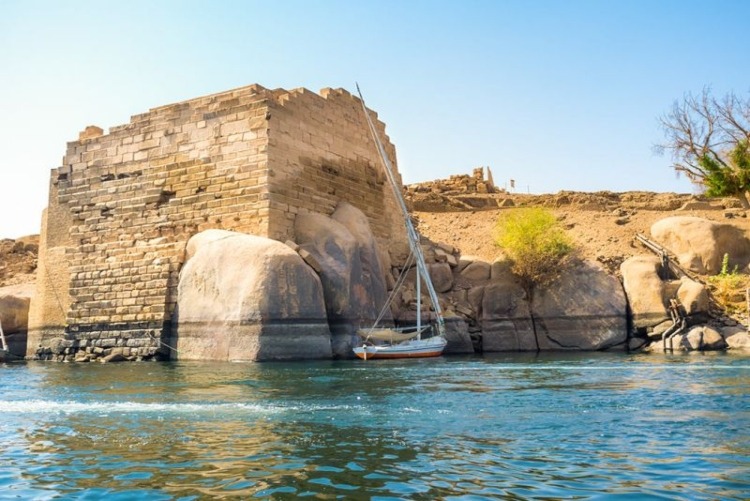
Sail on a Felucca
This is a routine two-hour short cruise that sails in a loop around the middle Aswan islands, with spectacular views of the unique desert sands on the west river bank, and the city on the east bank. Also, a felucca, unlike the engine boats, is traditionally wooden and completely maneuvered by hand. This usually means there are two guys helping to man the boat and let it take sail. They’re super fun but not if you need to get anywhere in a hurry!

Day Trip to Abu Simbel
The Egyptian king Ramses II built two temples in Abu Simbel, which are now located in Aswan, southern Egypt. The region was once on the southern border of pharaonic Egypt, facing Nubia. The four huge Ramses sculptures in front of the main temple are magnificent works of ancient Egyptian art. The temples were saved from the rising waters of the Nile River caused by the construction of the Aswan High Dam in the 1960s by a tremendous engineering accomplishment. Abu Simbel is about 20 kilometers north of the Sudanese border and 300 kilometers from Aswan. There are two methods to get from Aswan to Abu Simbel. Air travel on one of the direct flights between Aswan and Abu Simbel is the quickest method of transportation. The flight takes about 45 minutes, and it is designed to give you about 1.5 hours to see Abu Simbel’s two temples. The only airline that provides this service is Egypt Air, and there are direct shuttle buses that run from the airport all the way to the temple complex.
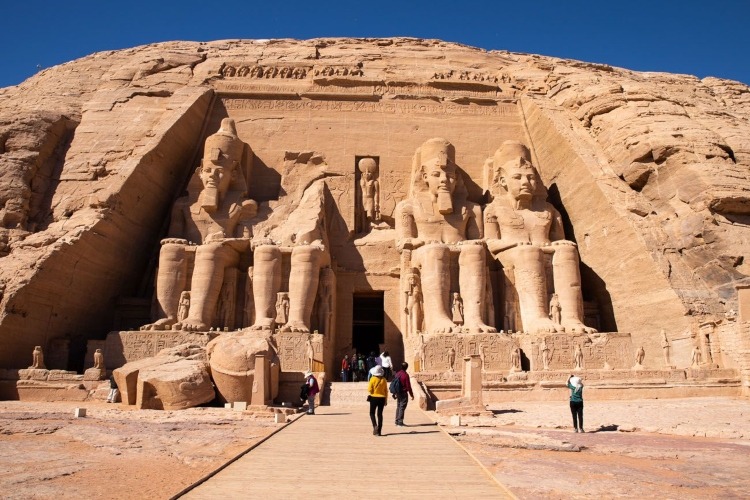
Take a Boat to Philae Temple
Visiting the stunning Philae Temple in Aswan is so important in your Aswan trip! Along with the temples at Dendera and Edfu, the Philae Temple is one of Egypt’s best-preserved Ptolemaic structures. The Ptolemaic era, which lasted from 332 to 30 BC, saw the construction of almost two-thirds of the complex’s still-standing structures. The Philae Temple Marina on the mainland is where your tour will begin. Your entrance tickets can be purchased at a ticket counter then you can make your way to the boat launch. You will find many motorboats standing by to carry you to Philae Island. Although the price will need to be negotiated with the water taxi driver, you can plan to pay about 175 EGP for a boat that can accommodate up to eight people.

Monastery of St. Simeon
After being established in the seventh century and being abandoned because of water issues in the 13th century, it is one of Egypt’s largest and best preserved Coptic monasteries. It is situated between the sand dunes on the West Bank of the Nile. It was reconstructed in the tenth century and honored St. Simeon. The monks then set out for Nubia in an effort to win the native people over to Christianity. You can either get a camel to carry you up the (largely paved) desert trail or take a private boat across the Nile to get there. The monastery, which was bordered by desert sands, was constructed on two levels, with the upper level made of mud brick and the bottom level of stone.
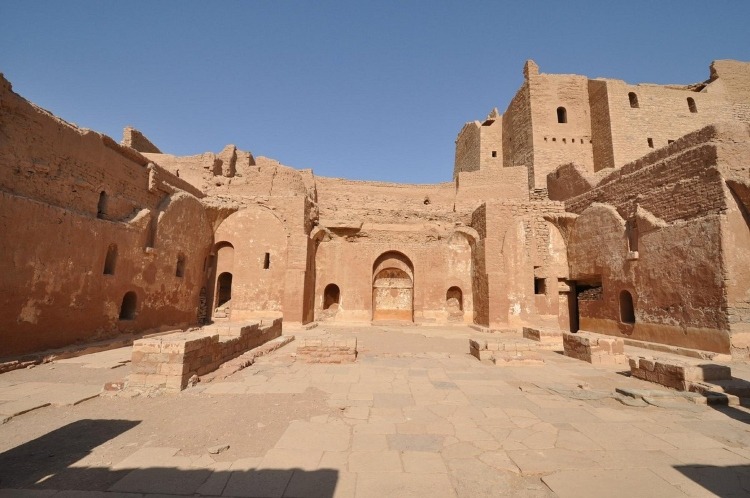
Riding Camels on Aswan’s West Bank
Riding camels between the Noble Tombs and the Monastery of St. Simeon on Aswan’s west bank is a picturesque way to travel. At the Tombs of the Nobles, camels can be ridden near the boat landing. It takes around an hour to go reach the monastery. This is best done early in the morning to avoid riding during the hottest part of the day.

Climb up to the Tombs of the Nobles
The valley of the Nobles has graves designed for high priests, rulers from the middle and new kingdoms, and the sophisticated in the Egyptian courts. The tombs are all identical in layout and feature a straightforward design. The majority of the valley’s graves have been discovered intact and untouched. The wall still displays scenes in vibrant colors of laborers going about their everyday business in the fields, as well as musicians, artists, and general craftspeople. The Nobles’ Tombs are in Luxor City’s West Bank. Each tomb was identified by a number, and Ramose’s tomb, which has the number 55, is the most well-known in the Valley of the Nobles.
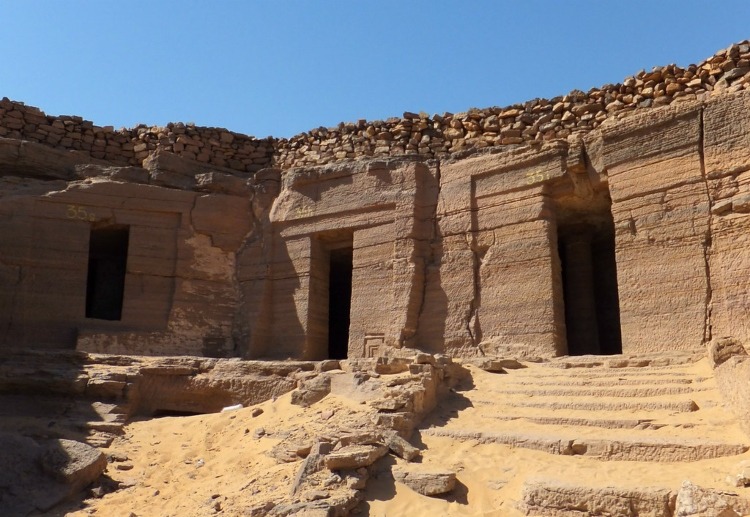
Aga Khan Mausoleum
The Aga Khan Mausoleum, which stands atop a cliff on the West Bank, was built to house the tomb of Sir Sultan Muhammad Shah. You might imagine the Agha Khan in Aswan as an austere, solitary structure that was influenced by the Fatimid architecture of Cairo. The building can be recognized for its elegance and unique usage of pink granite. The begum, the late Aga Khan III’s wife who requested its construction, passed away in 1957. Nevertheless, the location is well worth a trip, whether for the peace and quiet or the breathtaking views of the Nile and the home below.
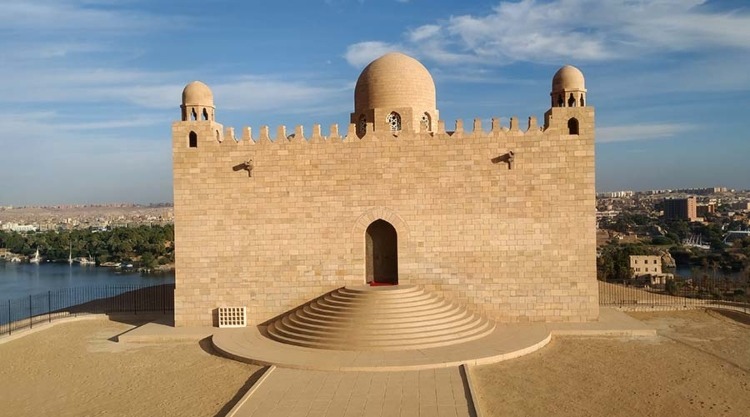
Whether you’re interested in water sports, enchanted sceneries, or learning about the region’s history, Aswan has it all. P.S. It’s better to travel to Aswan in the winter if you dislike the summer’s burning heat!


